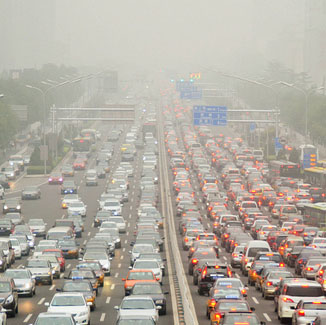August 6, 2014 — Last year, Beijing’s concentration of fine particulate matter (PM 2.5) averaged nearly four times the World Health Organization’s recommended safe level of 25 micrograms per cubic meter. On bad days this January, that number soared to over 600. It’s safe to say factories, power plants and automobile usage in the region are leaving the city’s 20 million residents smothered in smog.
Now, the Chinese government is enlisting the help of tech industry giant IBM to reach its cleaner air goals. By using sensors, satellites and analytics, IBM will be able to predict smog levels up to three days in advance. Perhaps more importantly, the company’s models will be able to pinpoint the sources of smog down to the street level, helping government officials with policy, planning and decision making.
This partnership with IBM comes as Beijing officials are investing $160 billion in an effort to reduce PM 2.5 concentrations by 25 percent by 2017. IBM’s effort to closely monitor pollutant levels and sources may be the city’s strongest weapon in its “War on Smog.” Photo by Safia Osman (Flickr | Creative Commons)
Ensia shares solutions-focused stories free of charge through our online magazine and partner media. That means audiences around the world have ready access to stories that can — and do — help them shape a better future. If you value our work, please show your support today.
Yes, I'll support Ensia!
